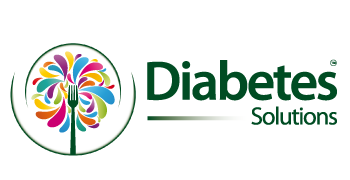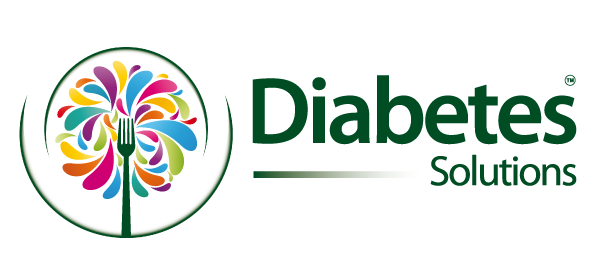Lowering LDL cholesterol, often referred to as “bad” cholesterol, is crucial for good cardiovascular health. High levels of LDL cholesterol can lead to the build-up of plaque in arteries, increasing the risk of heart disease and stroke. Fortunately, one of the most effective ways to reduce LDL cholesterol naturally is through dietary fibre.
Understanding Fibre
Fibre is a type of carbohydrate that the body cannot digest. Unlike other carbohydrates, which break down into sugar molecules, fibre passes through the digestive tract relatively intact. There are two main types of dietary fibre: soluble and insoluble.
- Soluble Fibre: This type dissolves in water to form a gel-like substance. It can help lower blood cholesterol and glucose levels. Soluble fibre is found in oats, peas, beans, apples, citrus fruits, carrots, barley, and psyllium.
- Insoluble Fibre: This type promotes the movement of material through the digestive system and increases stool bulk, helping with constipation or irregular stools. Good sources include whole-wheat flour, wheat bran, nuts, beans, and vegetables such as cauliflower and green beans.
The Mechanism: Fibre and Bile
To understand how fibre helps reduce LDL cholesterol, we need to explore its interaction with bile acids. Bile acids are produced by the liver and stored in the gallbladder, playing a critical role in the digestion and absorption of dietary fats.
- Bile Acid Production and Cholesterol: Bile acids are synthesised from cholesterol in the liver. When you consume fatty foods, bile acids are released into the intestines to aid in fat digestion. After aiding digestion, these bile acids are reabsorbed into the bloodstream and returned to the liver to be reused.
- Soluble Fibre and Bile Binding: Soluble fibre can bind to bile acids in the intestines, forming a complex that is not easily reabsorbed. This binding process prevents bile acids from being reabsorbed into the bloodstream and forces the body to excrete them through the stool.
- Increased Bile Acid Synthesis: Since bile acids are excreted rather than recycled, the liver must produce more bile acids to replace those lost. This production process requires cholesterol, which is taken from the bloodstream, thereby reducing the overall amount of LDL cholesterol in the blood.
The Biological Process
Step 1: Bile Acid Production
Bile acids are crucial for the emulsification and absorption of dietary fats. The liver converts cholesterol into bile acids, which are then stored in the gallbladder. Upon eating a meal that contains fat, the gallbladder releases bile acids into the small intestine.
Step 2: Digestion and Reabsorption
In the small intestine, bile acids emulsify fats, breaking them down into smaller molecules that can be easily digested by enzymes. Once their job is done, a significant portion of bile acids is reabsorbed into the bloodstream and transported back to the liver to be reused.
Step 3: Fibre’s Role in Bile Acid Excretion
When soluble fibre is present in the small intestine, it binds with bile acids, forming a complex that cannot be reabsorbed. This fibre-bile complex is excreted in the stool, removing the bile acids from the body.
Step 4: Cholesterol Utilisation
To replace the lost bile acids, the liver converts more cholesterol into bile acids. This increased conversion reduces the cholesterol levels in the bloodstream, specifically lowering LDL cholesterol, as it is the primary source of cholesterol for bile acid synthesis.
The Benefits of Fibre Beyond Cholesterol Reduction
In addition to lowering LDL cholesterol, a high-fibre diet offers numerous health benefits:
- Improved Digestive Health: A high-fibre diet promotes regular bowel movements and helps prevent constipation.
- Better Blood Sugar Control: Soluble fibre slows the absorption of sugar, which can help improve blood sugar levels, making it beneficial for individuals with diabetes or at risk of developing diabetes.
- Weight Management: High-fibre foods tend to be more filling than low-fibre foods, helping you stay satisfied longer and potentially aiding in weight loss or maintenance.
High-Fibre Foods to Include in Your Diet
Incorporating a variety of high-fibre foods into your diet is key to reaping the benefits of fibre for cholesterol reduction. Here are some excellent sources of dietary fibre:
- Fruits: Apples, pears, oranges, berries, bananas, and prunes.
- Vegetables: Carrots, broccoli, sweet potatoes, spinach, Brussels sprouts, and artichokes.
- Legumes: Lentils, chickpeas, black beans, kidney beans, and split peas.
- Whole Grains: Oats, barley, quinoa, brown rice, and whole-wheat products.
- Nuts and Seeds: Almonds, chia seeds, flaxseeds, and sunflower seeds.
- Psyllium: A particularly potent source of soluble fibre often used as a fibre supplement (note, if you intend to buy a bag of psyllium, ensure that you buy ‘husks’, and NOT ‘husk powder’!! Husk powder is like mortar, and in my view only good for use in baking!
Practical Tips for Increasing Fibre Intake
- Start Slowly: If you’re not used to a high-fibre diet, increase your fibre intake gradually to prevent digestive discomfort. Add a little more fibre to your diet each week.
- Stay Hydrated: Fibre works best when it absorbs water, so be sure to drink plenty of fluids throughout the day.
- Mix It Up: Include a variety of fibre-rich foods in your diet to ensure you get both soluble and insoluble fibre.
- Read Labels: Look for foods labelled “high in fibre” or “good source of fibre”. Aim for products with at least 3 grams of fibre per serving.
- Fibre Supplements: If you’re struggling to get enough fibre from food alone, consider a fibre supplement like psyllium husks or chia seeds.
Reducing LDL Cholesterol with Fibre
- Breakfast Boost: Start your day with a high-fibre breakfast. Try steel-cut oats topped with berries and a sprinkle of flaxseeds or chia seeds.
- Snack Smart: Choose high-fibre snacks such as raw vegetables with hummus, a handful of nuts, or an apple.
- Incorporate Legumes: Add beans or lentils to soups, salads, and stews. Try meatless meals featuring legumes as the main protein source.
- Whole Grains: Replace refined grains with whole grains. Opt for brown rice instead of white rice, whole-wheat pasta instead of regular pasta, and whole-grain bread instead of white bread. Note – if you are attempting to manage/lower your blood sugar levels, then consume grains only in moderation.
- Fruit and Veggie Fill-Up: Aim to fill half your plate with fruits and vegetables at every meal. Explore new varieties and preparation methods to keep things interesting.
- Psyllium Power: Consider adding a psyllium supplement to your routine if you need an extra fibre boost. Always follow the package directions and drink plenty of water. Note… choose the ‘husks’ and not the ‘husk powder’!
By understanding the vital role fibre plays in lowering LDL cholesterol and taking steps to increase your intake, you can significantly improve your heart health. Incorporating a variety of high-fibre foods into your daily diet can help you maintain healthy cholesterol levels and enjoy the many other benefits that come with a fibre-rich diet.





